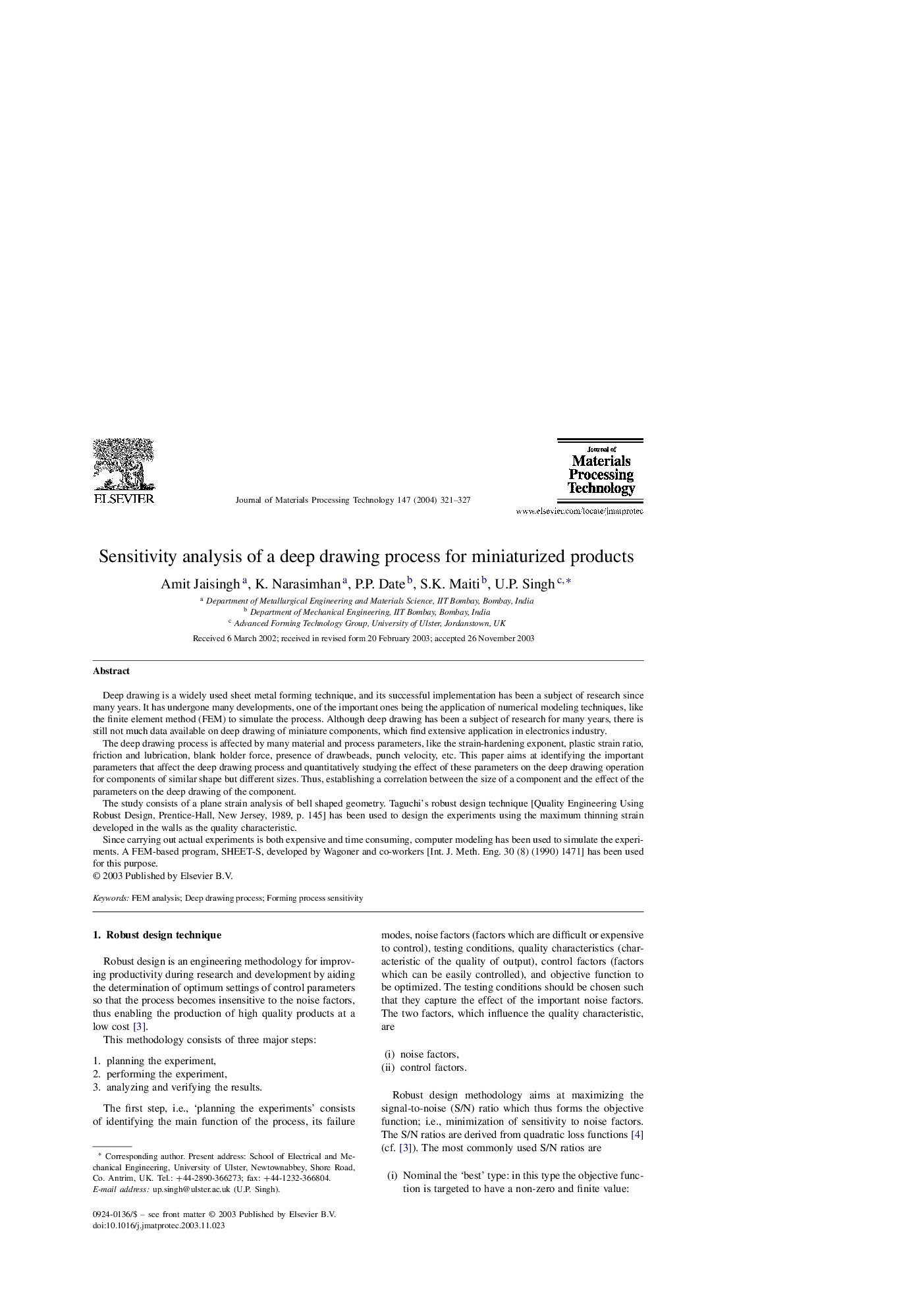| Article ID | Journal | Published Year | Pages | File Type |
|---|---|---|---|---|
| 10418439 | Journal of Materials Processing Technology | 2014 | 17 Pages |
Abstract
Deep drawing is a widely used sheet metal forming technique, and its successful implementation has been a subject of research since many years. It has undergone many developments, one of the important ones being the application of numerical modeling techniques, like the finite element method (FEM) to simulate the process. Although deep drawing has been a subject of research for many years, there is still not much data available on deep drawing of miniature components, which find extensive application in electronics industry.
The deep drawing process is affected by many material and process parameters, like the strain-hardening exponent, plastic strain ratio, friction and lubrication, blank holder force, presence of drawbeads, punch velocity, etc. This paper aims at identifying the important parameters that affect the deep drawing process and quantitatively studying the effect of these parameters on the deep drawing operation for components of similar shape but different sizes. Thus, establishing a correlation between the size of a component and the effect of the parameters on the deep drawing of the component.
The study consists of a plane strain analysis of bell shaped geometry. Taguchi’s robust design technique [Quality Engineering Using Robust Design, Prentice-Hall, New Jersey, 1989, p. 145] has been used to design the experiments using the maximum thinning strain developed in the walls as the quality characteristic.
Since carrying out actual experiments is both expensive and time consuming, computer modeling has been used to simulate the experiments. A FEM-based program, SHEET-S, developed by Wagoner and co-workers [Int. J. Meth. Eng. 30 (8) (1990) 1471] has been used for this purpose.
Keywords
Related Topics
Physical Sciences and Engineering
Engineering
Industrial and Manufacturing Engineering
Authors
Amit Jaisingh, K. Narasimhan, P.P. Date, S.K. Maiti, U.P. Singh,
